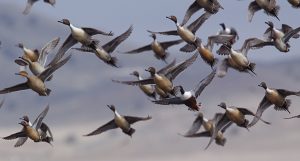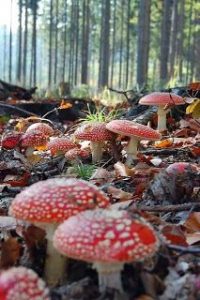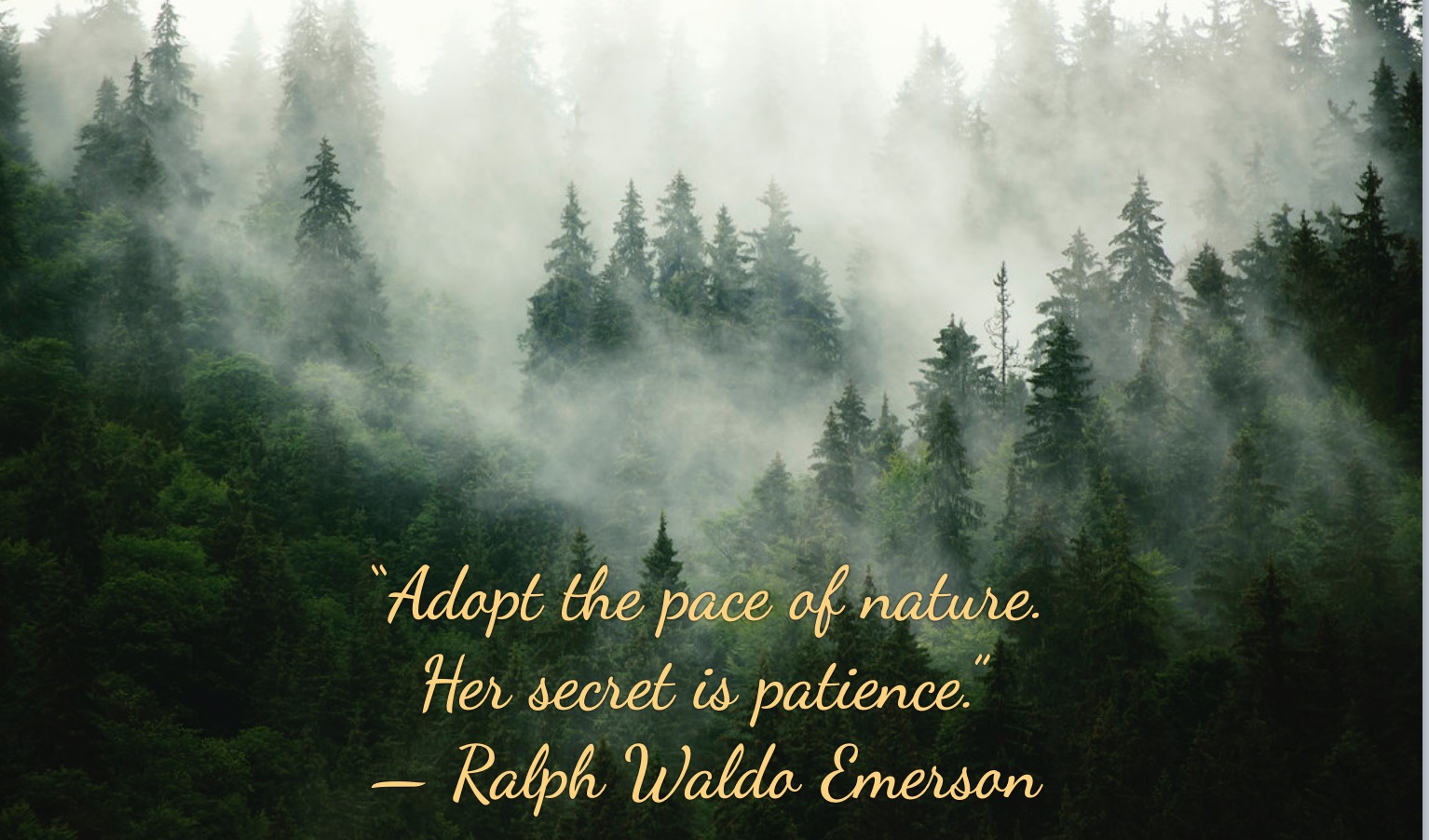For the last couple of years I’ve had a growing interest in biomimicry, looking to nature to inspire the design of products or systems. Of those two, I’m far more interested in the systems aspect – how do we adopt and adapt nature’s principles to create social systems that are creative and resilient?
I’ve written up this list of biomimetic features that I believe will be valuable in creating a more peaceful and sustainable, yet still dynamic and innovative, world – or any subset of the world, like organisations, businesses, economies, communities, etc.
To create this list, I started with a list from an article in Wired Magazine, which in turn was distilled from the wisdom of Janine Benyus, Michael Braungart and William McDonough, Kevin Kelly, Steven Vogel, D’Arcy Thompson, Buckminster Fuller, Julian Vincent, and Dee Hock. Then I’ve added to it from my own reading of thinkers like Elinor Ostrom, Margaret Wheatley, Barbara Marx Hubbard, Riane Eisler, Bernard Lietaer, Frederic Laloux, Iain McGilchrist, Otto Scharmer and Stan McChrystal (the links are to past blog posts I’ve written about their work, and see also my post on the Shift in Consciousness).
I’ll start out with a section on flocking behaviour, which consists of three simple rules, and then I’ll go into a selection of other principles. This is just a short introduction, and this list of principles is by no means exhaustive, but I hope it might inspire some thoughts on how you can bring more biomimicry into your own life and work. I really believe biomimicry holds important clues to the future organisation of our world.
Flocking
As Mitchell Waldrop sets out in Complexity, there are three simple rules that determine flocking behaviour, as programmed into the Boids algorithm (there is also a short video explaining this):
 separation: steer to avoid crowding local flockmates
separation: steer to avoid crowding local flockmates- alignment: steer towards the average heading of local flockmates
- cohesion: steer to move towards the average position (centre of mass) of local flockmates
This model can be replicated in organisations to promote effectiveness, unity of purpose, and flat-structured collaboration.
To say more about each of these three dynamics:
Separation
Nature abhors a vacuum, so it diversifies to fill every niche. Think of leaves optimising for photosynthesis. When a tree falls in the forest, it doesn’t take long before opportunistic plants grow to fill the space. Even within a single plant, leaves pivot to optimise their exposure to sunlight, avoiding the shade of leaves higher up. Every space is filled, but not over-filled. Survival of the “fittest” doesn’t mean the strongest or fastest – it means the organism that is best adapted to fit in with its environment.
Alignment
For self-organisation to work, there needs to be a shared sense of overall direction that arises organically from the collective. Instead of trying to predict and control the future, the flock/organization has a life and a sense of direction of its own. Everyone is invited to listen in and understand what the organization wants to become, what purpose it wants to serve. Margaret Wheatley calls this its Evolutionary Purpose.
Cohesion
Nature rewards cooperation. A large area of forest is exponentially more diverse and productive than a small area of forest. A flock or herd can better protect its young and vulnerable. Likewise, a grouping of humans or human-created enterprises can create a richer ecosystem than isolated ones – think of a city’s theatre district, or business district, or restaurant district, where geographical proximity improves, rather than diminishes, the prospects of its inhabitants.
And now onto some other examples:
Self-assembling
The organisation creates itself from the ground up. In nature, single cells combine to become multi-celled organisms, which combine to create higher-order organisms (like humans: see I Contain Multitudes), which create superorganisms, ecosystems and societies. The organisation is fractal, in the sense that it is self-similar at all scales – think of a tree, in which each tree branch, from the trunk to the tips, is an approximate copy of the one that came before it. This creates resilience, because you can chop the organism/organisation into smaller pieces, and each piece will still be able to function independently of the whole.
 Self-organising
Self-organising
Margaret Wheatley endorses self-organising systems, analogous to what we see all around us in nature. Nature has no CEO determining its strategy, nor deciding what species gets “promoted” and which is “fired”. It is a beautifully messy, chaotic, but ultimately intelligent system that has done an amazing job of evolving without anybody taking charge. This kind of organisation is adaptable, flexible, self-renewing, resilient, intelligent, and constantly learning. Stan McChrystal describes in Team of Teams how the Joint Task Force in Afghanistan had to decentralise into self-organising units, sacrificing MECE (mutually exclusive, collectively exhaustive) efficiency in favour of messy effectiveness.
Diversity
Nature banks on diversity, so is generous in its abundance of forms. The more diverse an ecosystem, the more resilient it is.
Rapid prototyping rather than planning
Nature doesn’t have a plan, yet it is constantly innovating, experimenting, adapting and evolving. It generates new mutations all the time, most of which fail, but occasionally a new variation proves to be an improvement on the old model, finds its ecological niche, and thrives. The success of the new prototype doesn’t come from deliberate design and/or canny marketing, as in our human world – nature simply chucks around a whole load of new ideas, which succeed (i.e. survive) or fail (die before passing on the experimental genetic code).
Relentlessly adjusting to the here and now
Nature demands local expertise. In human terms, this means devolving decision-making to the lowest possible level. Elinor Ostrom incorporated this into two of her principles on the sustainable management of the commons:
a) Match rules governing use of common goods to local needs and conditions: There is no one-size-fits-all. Rules should be determined by local people in accordance with local ecological needs. Likewise, an ecosystem is perfectly suited to its environment.
b) Ensure that those affected by the rules can participate in modifying the rules.
Participatory decision-making is vital. There are all kinds of ways to make it happen, but people will be more likely to follow the rules if they had a hand in writing them. In nature, all the participants in an ecosystem have a hand in co-creating its “rules” in terms of how it behaves, and responds to new situations.
Cooperate and compete – not just one or the other
This is also called coopetition, meaning collaboration between competitors in the hope of mutually beneficial results. In Complexity, Mitchell Waldrop writes about using this principle to resolve disputes about the best way to achieve the goal: cooperate to agree the metrics of success, and then prototype all the competing methods to achieve it. The method that performs best against the metrics “wins”. Nature is full of competition for resources, but also generously rewards cooperation. In Riane Eisler’s terms, this represents partnership, rather than domination.
Optimise the system rather than individual components
Take the holistic view, rather than focusing on the individual. Surprising and exciting things emerge at this scale, when synergies and feedback loops enable the whole to become greater than the sum of its parts. Social technologies that harness this capability include Design Swarms and Theory U.
Minimise waste
Nature uses only the energy it needs. Use minimal energy and materials, gather them efficiently, and recycle them afterwards. In nature, the death of one organism helps provide life to a new one.
 Balance
Balance
Nature is a never-ending cycle of birth and death, day and night, summer and winter, growth and contraction. In our human world, we tend to favour one side of the equation over the other – life over death, day over night, summer over winter, growth over contraction, but that is not sustainable. Nature requires a dynamic balance of yin and yang, the female and male principles, that generates life and maintains the system at the creative edge between order and chaos.
Crisis precedes transformation
Nature is periodically wracked by crisis – earthquakes, wildfires, volcanic eruptions, floods, droughts, and so on. Naturally, we humans try to mitigate the effects of such disasters, but at the same time we should also learn to appreciate the role of crises in generating transformation. If you think of the caterpillar going into its cocoon, what happens next is pretty disgusting. It digests itself with its own enzymes, creating a slimy soup from which the body of the butterfly begins to form. (Please don’t try this at home.) There are many more examples of nature having a radical clearout of the old to make way for the new, to keep the system fresh and vital, breakdown leading to breakthrough. It’s only we humans that get terribly attached to the business as usual.
Reciprocity and connection
 Possibly my favourite example of a biomimetic model is the mycorrhizal (or fungal) network, also known colloquially as the “wood wide web”. Apparently 90% of land plants are in mutually beneficial relationships with the fungi that form a subterranean ecosystem, largely invisible, that nourishes the visible organisms of trees, shrubs, and flowers. This highly underrated dimension of the natural world lies there in the dark, quietly doing its essential work. Just once in a while, when conditions are favourable, it erupts into the fruiting bodies of mushrooms.
Possibly my favourite example of a biomimetic model is the mycorrhizal (or fungal) network, also known colloquially as the “wood wide web”. Apparently 90% of land plants are in mutually beneficial relationships with the fungi that form a subterranean ecosystem, largely invisible, that nourishes the visible organisms of trees, shrubs, and flowers. This highly underrated dimension of the natural world lies there in the dark, quietly doing its essential work. Just once in a while, when conditions are favourable, it erupts into the fruiting bodies of mushrooms.
If I was planning a revolution against the status quo (which obviously I’m not, else I wouldn’t be writing about it here… unless of course this is a double-bluff?!), the mycorrhizal network is the biomimetic model I would use – a dense web of connections, hidden underground, engaged in nourishing its more visible partners, sharing and gathering resources until the time is right, when it bursts forth from obscurity to disperse its spores above ground.
Wanting to be like fungus may not sound like a very glamorous aspiration, but don’t knock it. The global biomass of fungus far exceeds that of all animals combined, of which we humans are just a tiny percentage. Low-key and unglamorous can indeed be mighty.


Here is a house design we do based on biomimicry of the earth’s atmosphere:
http://www.enertia.com/climatechange.html